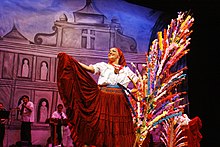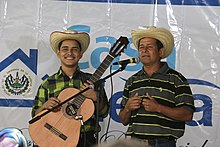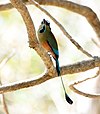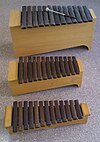This article needs additional citations for verification. (August 2021) |
This article contains too many pictures for its overall length. |
The culture of El Salvador is a Central American culture nation influenced by the clash of ancient Mesoamerica and medieval Iberian Peninsula. Salvadoran culture is influenced by Native American culture (Lenca people, Cacaopera people, Maya peoples, Pipil people) as well as Latin American culture (Latin America, Hispanic America, Ibero-America). Mestizo culture, Afro-Latin culture and the Catholic Church dominates the country. Although the Romance language, Castilian Spanish, is the official and dominant language spoken in El Salvador, Salvadoran Spanish which is part of Central American Spanish has influences of Native American languages of El Salvador such as Lencan languages, Cacaopera language, Mayan languages and Pipil language, which are still spoken in some regions of El Salvador.


| Type | Symbol | Year | Image |
|---|---|---|---|
| Anthem | National Anthem of El Salvador |
1879 | |
| Motto | DIOS UNIÓN LIBERTAD |
1821 | 
|
| Flag and Coat of arms | Coat of arms of El Salvador and Flag of El Salvador |
1912 | 
|
| Color | Cobalt blue and white
Additional appendages are in golden Amber (color) |
1912 |  
|
| Bird | Turquoise-browed motmot |
1999 | 
|
| Reptile | Green iguana |

| |
| Fish | Amatitlania Coatepeque, Endemic Species |

| |
| Art | Fernando Llort style Art |

| |
| Music | Xuc |

| |
| Instrument | Xylophone |

| |
| Dish | Pupusa |

| |
| Flower | Yucca gigantea |
2003 | 
|
| Tree | Tabebuia rosea |
1939 | 
|
| UNESCO World Heritage Site | Joya de Cerén |
1993 | 
|
| Patron and National Personification | Monumento al Divino Salvador del Mundo |

|